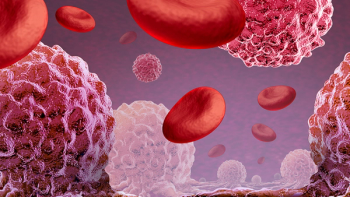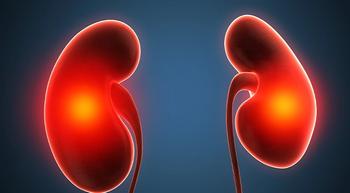
Oral Paclitaxel Combo May Lower Rates of Chemo-Induced Neuropathy in Metastatic Breast Cancer
In addition to having greater efficacy, the combination of oral paclitaxel and encequidar demonstrated lower rates of chemotherapy-induced peripheral neuropathy in patients with metastatic breast cancer compared to intravenous paclitaxel.
The combination use of oral paclitaxel and encequidar was not only associated with greater efficacy in patients with metastatic breast cancer, but also lower rates of chemotherapy-induced peripheral neuropathy, compared to intravenous paclitaxel, according to additional safety data of the KX-ORAX-001 trial that was presented at the 2020 San Antonio Breast Cancer Symposium (SABCS).
Chemotherapy-induced peripheral neuropathy is a painful side effect that is often associated with intravenous paclitaxel treatment. The numbness and tingling that primarily affects the hands and feet has a significant impact on quality of life for many patients with cancer, in particular in those who are older or have preexisting conditions, such as diabetes.
The pivotal, open-label, multinational phase 3 KX-ORAX-001 trial compared oral versus intravenous paclitaxel, both in combination with encequidar, to determine tumor responses, as well as to evaluate duration of response to therapy, progression-free survival (the time from treatment to disease worsening) and overall survival (the length of time from diagnosis or treatment that patients are still alive).
In total, 265 patients were treated with oral paclitaxel and 137 patients with the intravenous formulation of the treatment.
At the 2019 symposium, complete results from the study showed a significantly higher tumor response rate in patients who were treated with the oral regimen (35.8%), compared to those who received the intravenous regimen (23.4%).
At this year’s symposium, Dr. Hope S. Rugo, professor in the Department of Medicine, Hematology/Oncology, and director of Breast Oncology and Clinical Trials Education at the University of California San Francisco, Helen Diller Family Comprehensive Cancer Center, presented a poster that examined the neuropathy benefits to treating patients with oral paclitaxel.
With oral paclitaxel, patients experienced lower rates of treatment-emergent neuropathy, compared with those who received the intravenous formulation (22% versus 64%, respectively). In addition, grade 3 neuropathy occurred less frequently in the oral treatment arm (2% versus 15%).
The researchers also found that the cumulative risk of neuropathy with the oral regimen was slow to grow and remained steady by week 88 of the study, which was at 50% in the intravenous group during the same time frame.
Neuropathy-induced dose reductions were reported in 8% and 2% of patients treated with intravenous or oral paclitaxel, respectively, and 8% of patients in the intravenous arm discontinued treatment, compared with no patients in the oral arm. Of note, 12% of patients on the oral regimen needed medication to treat neuropathic symptoms, such as gabapentin or pregabalin, compared with 40% of patients treated with the intravenous formulation.
“(Oral paclitaxel and encequidar) was associated with less neuropathy, a later onset, and lower severity compared to intravenous paclitaxel in patients with metastatic breast cancer,” Rugo said in her presentation of the data. She concluded that this reduction in neuropathy could mean that patients remain on this effective therapy for longer, while also experiencing an improved quality of life.
For more news on cancer updates, research and education, don’t forget to





